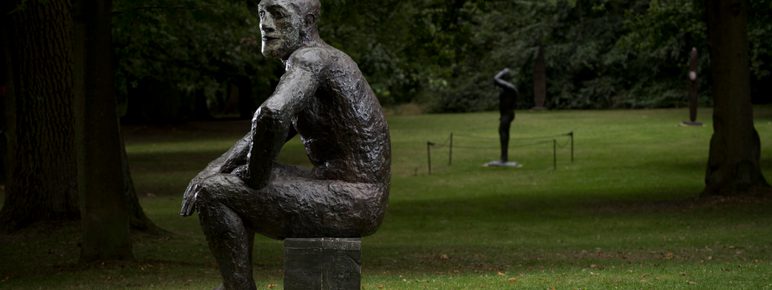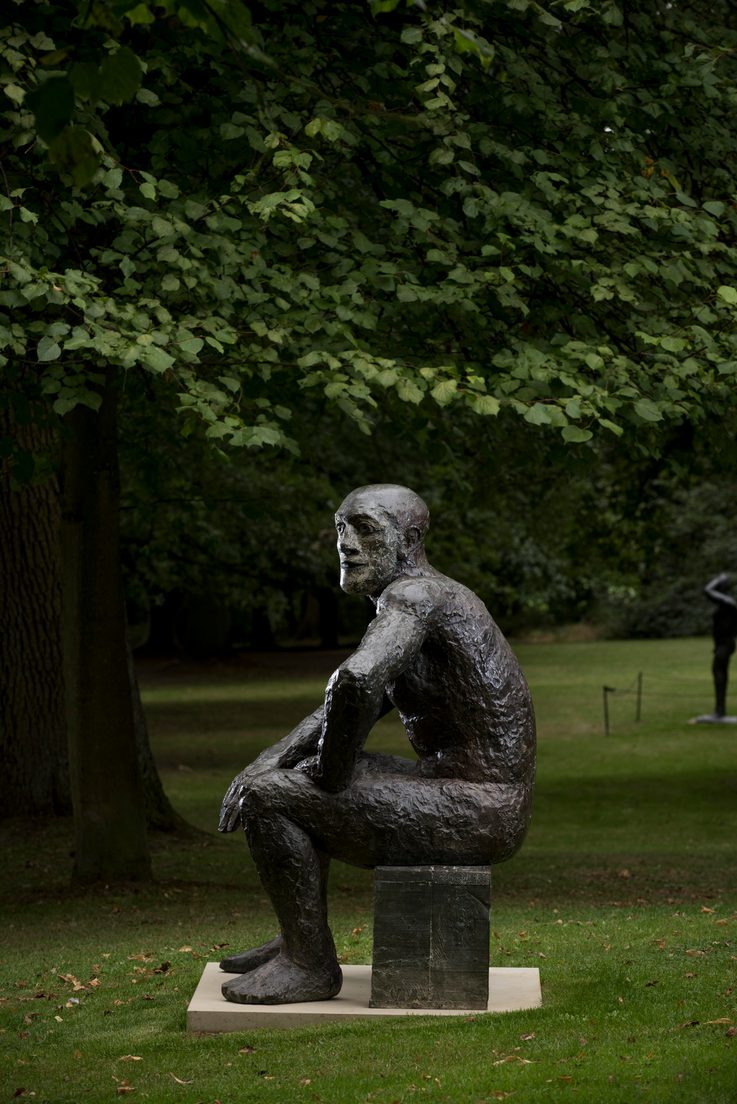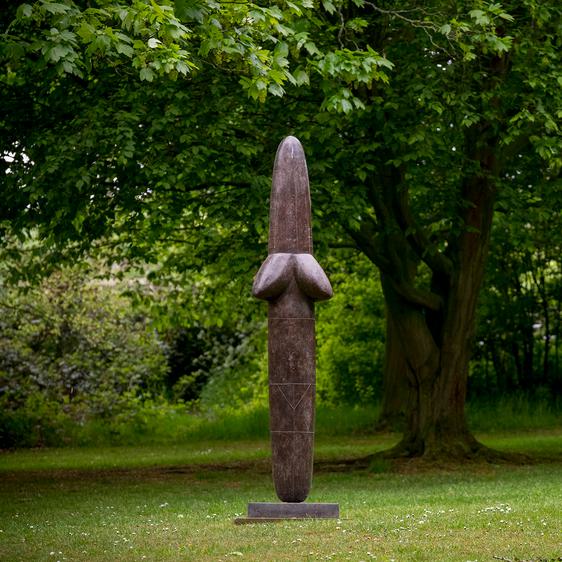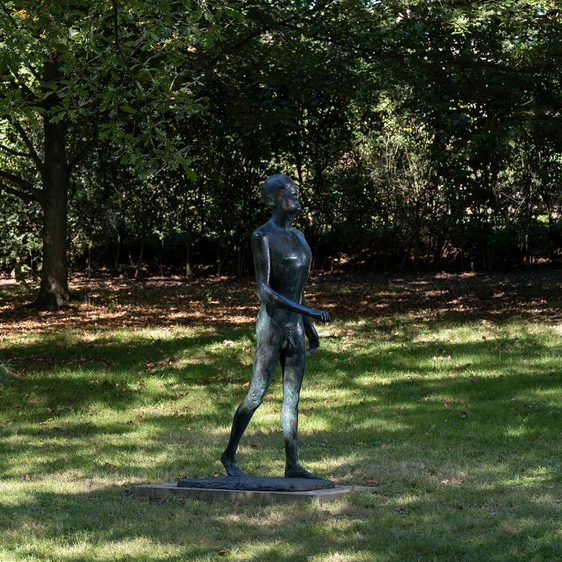
Elisabeth Frink: Seated Man II
Art Outdoors /Elisabeth Frink: Seated Man II
Conflict and oppression alongside compassion, faith and spiritual strength are common themes in the work of Elisabeth Frink (1930-93). The horrors of the Second World War had a lasting impact on her work and life, and prompted her to become an active supporter of Amnesty International. Frink’s proximity to the realities of war led her to create images of despair and hostility, but she was also inspired by heroism and self-sacrifice.
She used the male figure to explore the complexities of humanity, exposing both strength and vulnerability.
Seated Man II relates strongly to Frink’s Riace figures. These solitary individuals combine strength with a sense of quiet observation and isolation. Like the larger-than-life Riace figures, these works show the male form as muscular and powerful.
An exhibition of Frink’s sculpture, prints and plaster models – Natural Connection – is on display at The Weston until 23 February 2025.
Courtesy The Frink Estate and Yorkshire Sculpture Park.

You may also like
- Art Outdoors

William Turnbull: Large Idol
Large Idol forms part of a series of ‘Idol’ sculptures which William Turnbull made over the course of several years. These minimal works take the human form as a starting point which is then simplified and refined, whilst maintaining a sense of figuration. The titles of these streamlined forms make reference to them perhaps being thought of as ancient gods and being worshipped for their power and beauty. - Art Outdoors

Elisabeth Frink: Riace II, III and IV
The Riace figures are inspired by the 5th century BCE bronze sculptures that were rediscovered in the sea off the coast of the Riace region of Italy in 1972. - Art Outdoors

Elisabeth Frink: Protomartyr
Protomartyr represents the first Christian martyr, Saint Stephen, who provided food and aid to poor members of his community in Jerusalem. - Art Outdoors

Elisabeth Frink: Atlas
In Greek mythology, Atlas is a figure responsible for holding the heavens aloft. This sculpture combines several themes that Frink returned to throughout her career: strength and endurance alongside burden and vulnerability.